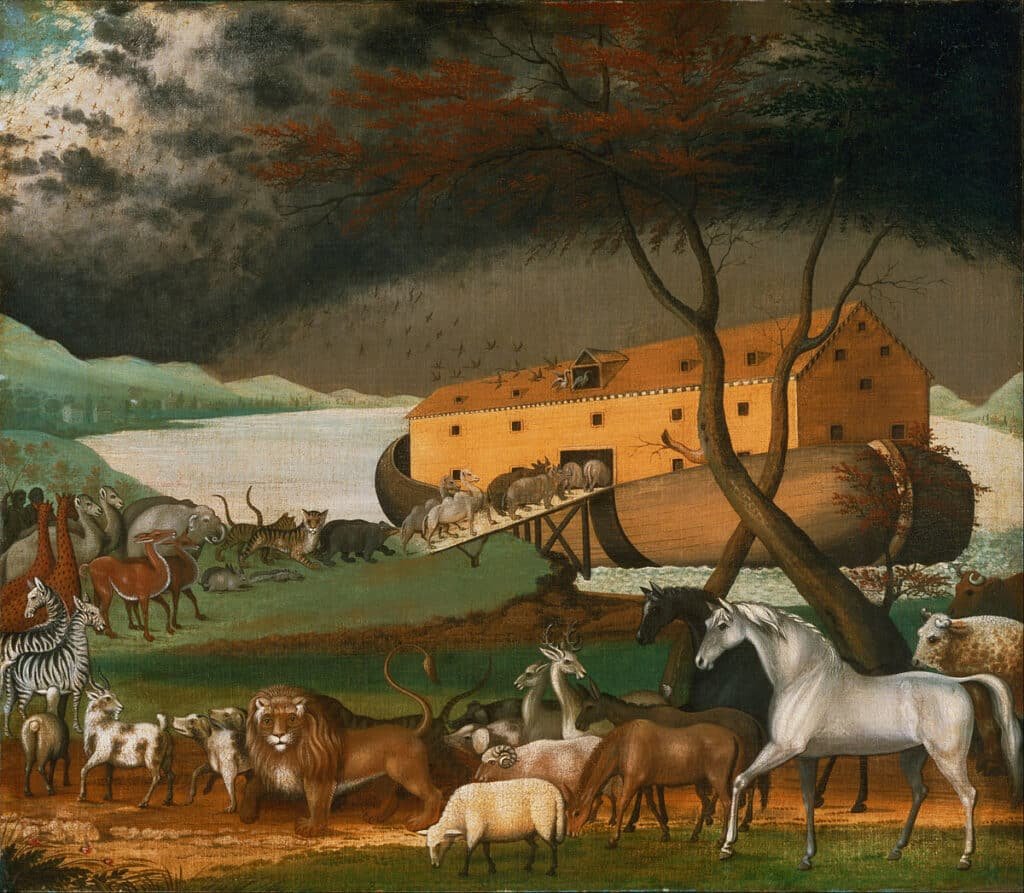The story of Noah and the flood has captivated millions of people, but if you’re not familiar with the details of this biblical story, it can be hard to know where to start reading it. After all, there are several different accounts of the flood in the Bible, which one should you read? Where should you start? The following outline on Noah and the flood will help answer those questions.
The deluge (Heb. mabbûl and gr. kataklusmós), was a great global cataclysm of waters. God through underground waters and heavy rains manifested his justice in a world full of wickedness, and his grace on Noah and his family. Biblical teachers date this historical event to approximately 2300 years BC. Moses recorded it in his book of Genesis. (read Genesis 6:1–9:17)
Bible story
In the unfolding of redemptive history, Adam and Eve sinned against God and sin entered the world and humanity. From that moment, the evil of men began to grow on earth, their plans and thoughts were always inclined to sin. That is why God decided, in his justice, to end all living beings through the flood. (Genesis 6:5,7,11–13,17; Genesis 2:16-17; Genesis 3:6-7; Romans 5:12-21)
God determined to destroy his creation to start anew, and this was under his promise that it would be the seed of the woman that would destroy sin and evil.
In his grace, he chose Noah to build an ark where he would save him from the flood along with his family and his animals. In that ark would be preserved, in primacy, the promised seed. (Genesis 6:8-9,14; Genesis 7:1-10; Genesis 3:15)
God executed his judgment after 120 years of having announced it, destroying every living thing. The earth returned to its origin of being “messy and empty” and covered with deep dark waters, God took a year to order it. He then ordered Noah out of the ark by giving them a command, similar to the one he gave Adam, to multiply on the earth. (Genesis 6:3; Genesis 7:11,17–23; Genesis 8:13,16,17; Genesis 9:1-7; Genesis 1:2,6–9,28)
The immediate peak is God’s pact with Noah and his oath never again to send another flood to destroy living things and the earth. As a sign, he set up an arch in the clouds as a reminder of his covenant. In this way, he was preserving the seed of the woman who is Christ Jesus, who will save his elect and the earth from sin and its consequences. (Genesis 9:8–17)
What does this story teach us?
God is just and gracious, we are sinners.
When Adam sinned we all sinned in him, that is why we are born totally corrupt and inclined to evil, being the cause of the great wickedness in the days of Noah and the consequence of the just wrath of God on the sinner, because “the wages of sin is death”. But God being merciful, and not skipping his justice but declaring us righteous in Christ by faith, he saved us from sin and eternal damnation, revealing to us in a great way his unmerited grace. (Genesis 3:1–6; Romans 5:6,23; 1Peter 3:18; Ephesians 2:4-5)
Noah and the ark are types of Christ.
Noah is presented as a better Adam and as a type of the last Adam, who is Christ. By Noah’s righteousness, his family was rescued from the flood, just as by Christ’s righteousness his people are rescued from sin. (Genesis 2:16,17; 1Corinthians 15:45; Genesis 6:9-10; 1Peter 3:18-20)
Likewise, the detailed construction of the ark points to the construction of the tabernacle and the temple. Remember that God lived in these places with his people in a special way. In the New Testament, by necessary consequence, we see that the true temple, tabernacle, and ark is Christ, and in Him, we are in communion with God and saved from his wrath. (Genesis 6:14–16; Exodus 36; 1; Chronicles 28; John 1:14; John 2:21; 1Peter 3:20-22)
The flood is an image of the second coming of Christ.
Jesus stated that his second coming will be as in the days of Noah, the world will be great in wickedness for being indifferent to the Gospel.
Just as on that day, God will show his judgment and grace to him in Christ, taking sinners to judgment for damnation and leaving his people to dwell with Him for eternity in a new heaven and new earth. (Matthew 24:37–42; 2Peter 3:5-13; Revelation 21:1)
God is faithful to his promises.
God promised a human seed that would defeat the devil, that seed was in Noah’s family, specifically Shem, and God kept it. Today we know that that seed is Christ and it was because of Him that Noah and his family were saved and that the earth was preserved by covenant. God is faithful! (Genesis 3:15; Luke 3:36)
Called to be heralds of justice.
In the same way that Noah was declared heir to righteousness by faith and called to be a herald of justice, we being justified by faith are called to be heralds of the Gospel of the Kingdom of God, the same one that brings forgiveness of sins to everyone who believes in Christ. (Hebrews 11:7; 2 Peter 2:5), Thank you, God, for showing us Christ in the midst of the flood!
READ MORE:
7 Bible stories for children: Stories Every Child Should Know
5 Stories Of Obedience In The Bible And How to Obey God
5 Stories of Unity In The Bible
Final Words:
In the Bible, Noah and the Flood are two separate yet related stories. The first story, told in Genesis 6 through 9, recounts how God became angry with humans because of their wickedness, and he planned to destroy them all by sending a flood to cleanse the earth. God chose Noah to save humankind through building an ark that would carry animals and his family, who would then repopulate the earth after the flood ended.
